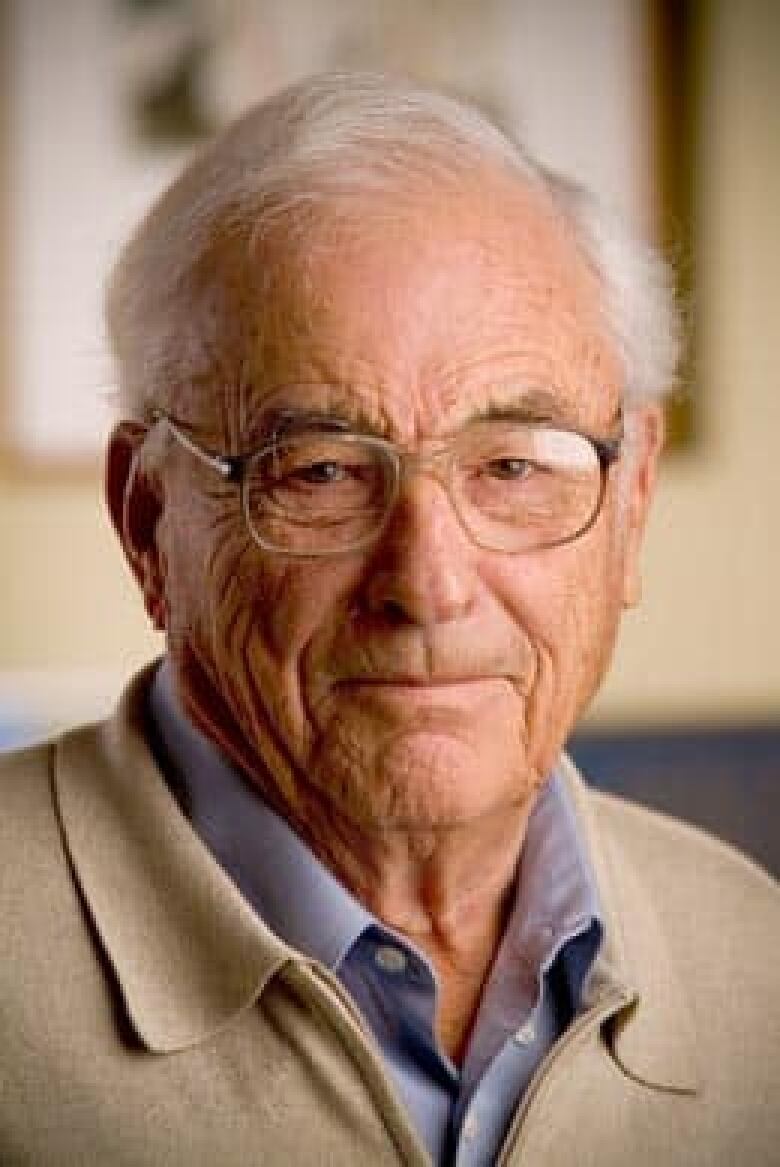Canadian scientist shares Nobel physics prize

A scientist born in Amherst, N.S., is sharing the Nobel Prize in Physics for his work in developing the sensor that is widely used in digital cameras.
Willard S. Boyle will share the award with George E. Smith and Charles Kao for their "groundbreaking achievements" in physics, the Royal Swedish Academy of Sciences announced Tuesday.

Boyle, 85, was born in Amherst in 1924 and moved to northern Quebecas a child so his father could work as a doctor at a lumber camp. He was home-schooled by his mother until he went to high school at Lower Canada College in Montreal.
Heflew Spitfires in the Fleet Air Arm of the Royal Canadian Navy in the Second World War.
After the war, Boyle went back to school and completed a PhD in physics at McGill Universityin 1950.He taught physics at the Royal Military College in Kingston, Ont., before joining Bell Labs in New Jersey.
Boyle is a father of four and has been married to his wife, Betty, for 62 years. They have 10 grandchildren and one great-grandchild.
Boyle saidbecoming a Nobel laureate has been a surprise.
"They don't tell you until the last minute, and it's the biggest surprise of your life to wake up and somebody says you've won a Nobel Prize," Boyle told CBC News from his condo in Halifax.
Boyle said the call came at 5:15 a.m. AT.
"I just found out because my wife punched me, she woke me up and she said, 'It's not a joke,' " he said.
Boyle holds dual Canadian and American citizenship, and Smith is American. Kao holds British and American citizenship.The scientists'discoveries include the transmission of light in fibres for optical communication and the invention of the charge-coupled device (CCD sensor), which is an imaging semiconductor circuit used as a digital camera's electronic eye.
The work by the three scientists has "helped shape the foundations of today's networked society," the committee said.
"They have created many practical innovations for everyday life and provided new tools for scientific exploration," said the prize citation.
'Revolutionized photography'
Boyle and Smith, 79, invented the first charge-coupled device, which is a semiconductor circuit that transforms light into electric signalsthat produce alarge number of image points, or pixels, in a short time. The invention "revolutionized photography," the citation said. The technology is also commonly used in medical imaging.
"Digital photography has become an irreplaceable tool in many fields of research. The CCD has provided new possibilities to visualize the previously unseen. It has given us crystal clear images of distant places in our universe as well as the depths of the oceans," the citation said.
Boyle said the idea for the device was born while sketching up possibilities on a blackboard at Bell Labs in October 1969.
"We realized here is something that is pretty interesting because it will for the first time enable technology to store photographs and transmit them and use them somewhere else. There was no film involved," he said.
Though the CCD sensor is most commonly used by the general public in their digital cameras, Boyle said he is most proud of the telescopic applications it has in astronomy. The device is used to capture images from the Hubble Space Telescope and Mars rovers.
"We saw for the first time the surface of Mars," Boyle told The Associated Press. "It wouldn't have been possible without our invention."
Boyle's other inventions include the first continuously operating ruby laser and he also worked with NASA to provide technological support during the Apollo space program.
Global broadband communication
Meanwhile, Kao, 75, calculated how to transmit light over long distances via optical glass fibres, which allow global broadband communication.
"Kao's enthusiasm inspired other researchers to share his vision of the future potential of fibre optics," the citation said.
Optical fibres now "make up the circulatory system that nourishes our communication society," said the citation.
The award includes 10 million kronor ($1.5 million).Kao will receive half the purse while Boyle and Smith each get a quarter. All three will receive a diploma and an invitation to the prize ceremonies in Stockholm and Oslo on Dec. 10, the anniversary of Nobel's death in 1896.
The prize announcement is the second of six awards focusing on medicine, physics, chemistry, economics, literature and the Peace Prize that will be announced through Oct. 12.
Alfred Nobel, the Swede who invented dynamite, established the prizes in his will in the categories of medicine, physics, chemistry, literature and peace. The economics prize is technically not a Nobel but a 1968 creation of Sweden's central bank.
On Monday, three American scientists shared the Nobel Prize in Medicine for discovering a key mechanism in the genetic operations of cells, an insight that has inspired new lines of research into cancer.
With files from The Associated Press












_(720p).jpg)


 OFFICIAL HD MUSIC VIDEO.jpg)
.jpg)



























































































